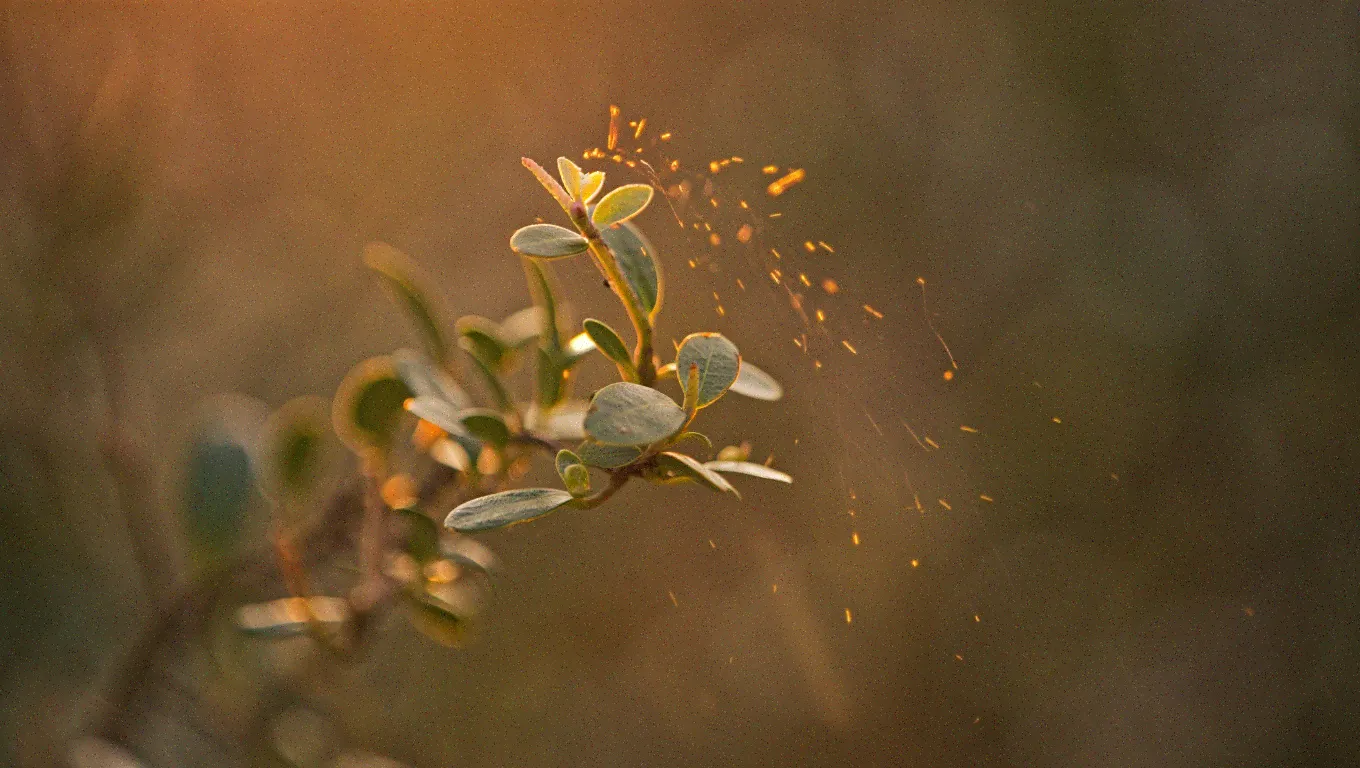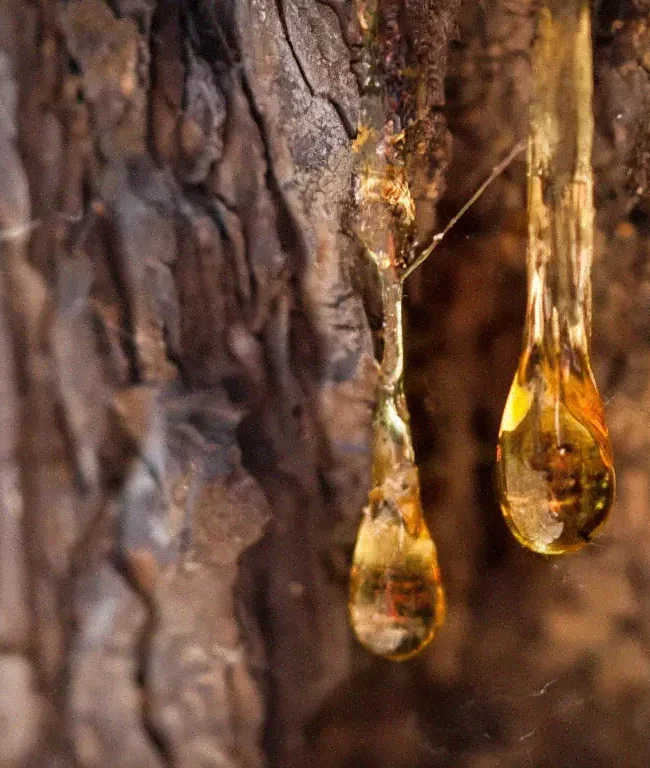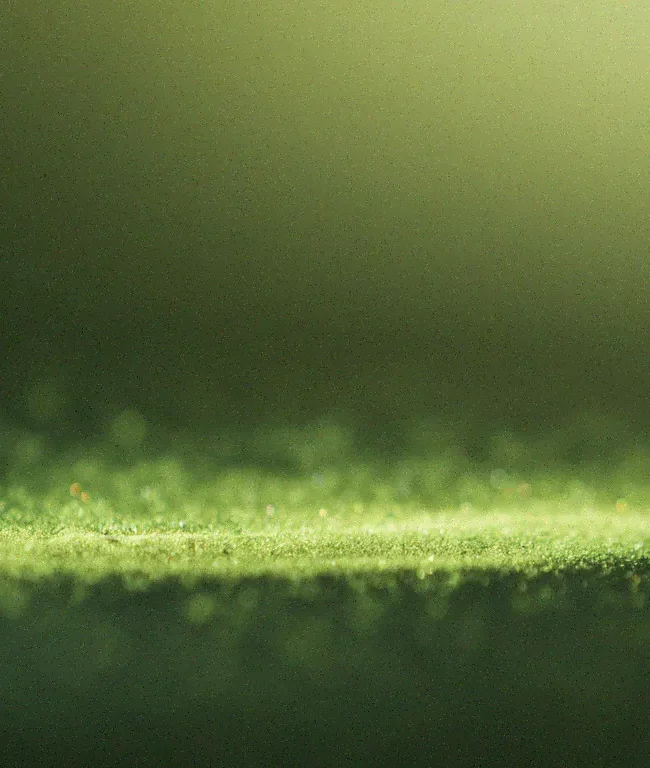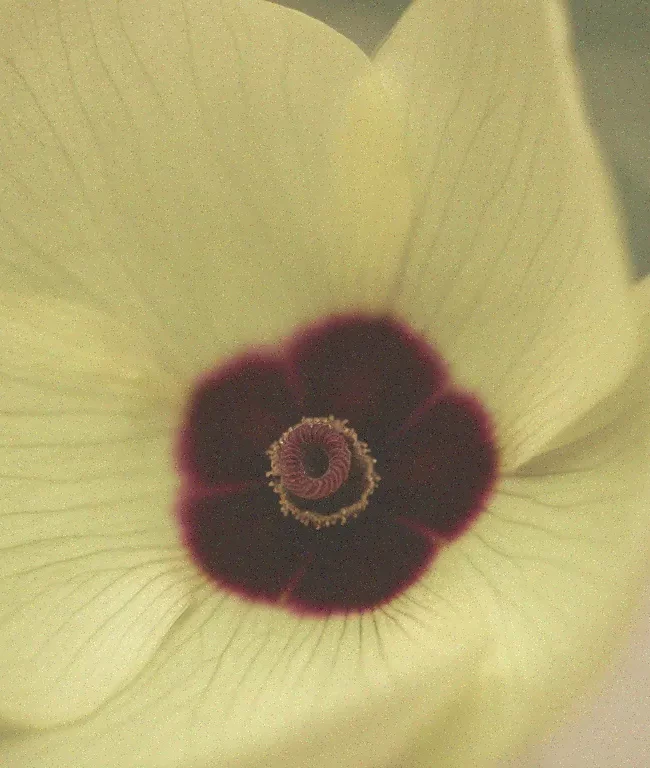
Cistus absolute: The amber fixative in woody and leather perfumery
Cistus absolute (Cistus ladaniferus) is fundamentally an amber-balsamic resinous material. Despite containing phenolic compounds chemically (phenylpropanoids), the material does not exhibit noticeable phenolic odor character. Instead, it delivers deep amber warmth, leathery undertones, and exceptional fixative properties at 0.1-1% in finished fragrances. In woody compositions, it provides amber glow and tenacity; in leather accords, it adds smooth texture and animalic depth. True phenolic materials like birch tar and cade oil dominate with smoky-tarry character and require 0.01-0.2% usage, while cistus contributes balsamic-resinous richness at substantially higher levels (5-25% in accords, 0.5-5% in concentrates).
For a comprehensive study of dry, structural resinous woods that provide architectural backbone and contrast to sweet balsamic notes—including guaiacwood, rosin, frankincense, and aged agarwood—see: The Architectonics of Non-Sweet Resinous Wood: A Study in Structural Tenacity.
Understanding cistus absolute’s true character
The olfactory profile of cistus absolute centers on warm, sweet, ambery-balsamic notes as its dominant characteristic. Professional supplier descriptions consistently emphasize “deep, rich, sweet balsamic aroma with persistent ambergris-like backnote” and “ambery note with resinous and balsamic character, mineral and incense feel, and warm floral nuances with leathery undertones.” The material presents secondary facets of animalic, leathery, and woody notes, with tertiary dimensions including dried fruits, caramel, tobacco, honey, and subtle herbaceous nuances.
Critically, across 10+ professional perfumery sources, cistus absolute is never described using phenolic terminology—no references to tarry, medicinal, coal tar-like, burnt wood, or campfire smoke appear in technical literature. The single exception notes “smoky-woody” as a minor facet among many descriptors, distinctly different from the dominant phenolic character of true smoky materials.
Comparing cistus to genuine phenolic materials reveals the distinction. Birch tar oil exhibits “powerful smoky tar/burnt wood aroma, distinctly phenolic, very penetrating and diffusive, obviously reminiscent of tar, charred wood and smoke.” Cade oil delivers “intensely smoky, leathery aroma with pronounced tar-like, dry woody, and phenolic characteristics that evoke burning cedarwood and charred pine.” These materials overwhelm formulations if used above 0.2%, require heavy IFRA restrictions due to allergen content, and taste primarily of pyrolysis (burning) odors. Cistus absolute, conversely, can be used at 5-20% in accord bases without overwhelming other materials, faces no specific IFRA restrictions, and reads as refined amber-resin rather than burnt wood.
The chemical composition supports this olfactory assessment. Cistus absolute contains 75% labdane-type diterpenoids providing amber-resinous qualities, 15% methylated flavonoids, and phenylpropanoids including phenolic acids. These phenolic compounds contribute to the chemical profile but do not translate to phenolic odor—a critical distinction between chemical classification and sensory experience.
Three forms of cistus: Essential distinctions
Cistus essential oil comes from steam distillation of leaves and twigs, yielding a golden yellow liquid with herbaceous, fruity-floral character and leather-hay notes. The chemical composition centers on monoterpenes (11-47% alpha-pinene, 12-31% camphene, 16.7% bornyl acetate) and sesquiterpene alcohols (13-20% viridiflorol). This lighter, more volatile material functions as a heart note and exhibits distinctly different character from the absolute—more medicinal and herbaceous, less sweet and resinous. Average usage in perfume compounds reaches 0.29%.
Labdanum resinoid results from non-alcohol solvent extraction of raw labdanum resin, producing a black or dark brown fragrant mass that becomes brittle with age. The material is thick, earthy, and less refined than absolute, containing high concentrations of waxes and heavy hydrocarbons with lower volatile aromatic content. Professional perfumers describe it as more “uncivilised” and raw compared to the absolute, with the lowest antimicrobial activity of cistus extracts. Its thickness limits commercial perfumery applications.
Cistus/labdanum absolute represents the refined extraction: concrete undergoes alcohol washing to yield an absolute that comprises approximately 70% of the original resin. The dark amber-green to dark brown viscous liquid contains 75% labdane-type diterpenoids and 15% flavonoids, delivering “cleaner floral-balsamic scent that outshines the thicker, earthier resinoid.” This is the material of choice for fine perfumery, providing exceptional fixative properties and lasting over 400 hours on smelling strips. The absolute functions as a true base note, with recommended usage of 0.1-1% in fine fragrance concentrates and 0.5-5% in perfume compounds generally.
Cistus absolute in woody fragrance compositions
Cistus absolute serves four primary functions in woody accords: fixative extraordinaire extending longevity beyond 400 hours, amber enhancement providing warm resinous depth, depth addition creating olfactory fullness, and bridging between disparate woody elements. The material grounds volatile top notes while unifying multiple wood varieties into coherent compositions.
Usage levels vary by application context. In fine fragrance concentrates, professional recommendations specify 0.1-1% of total composition. Within woody accord bases, cistus typically comprises 5-15% of the accord structure. Oriental-woody formulations employ 10-15% in base notes, while chypre-woody compositions use 15-20% of the formula. For woody incense themes, 5-10% provides appropriate depth without overwhelming frankincense or myrrh.
Documented formulation examples provide specific guidance. A traditional oriental-woody base demonstrates practical ratios: sandalwood 10 parts, labdanum 15 parts, vanilla absolute 20 parts, amber 5 parts, with supporting spices. A modified woody-amber version employs Atlas cedar 20 parts, sandalwood 15 parts, labdanum 10 parts, vanilla 10 parts, tonka bean 10 parts, patchouli 10 parts, amber 5 parts, bitter almond 10 parts. The classic chypre woody accord shows bergamot 40 parts, oakmoss absolute 20 parts, labdanum 20 parts, patchouli 20 parts.
A 1940s amber accord formula illustrates sophisticated woody-amber construction: labdanum absolute 100 parts, sandalwood essential oil 80 parts, vetiverol 50 parts, oakmoss absolute 30 parts, patchouli 10 parts, plus supporting musks and florals. This demonstrates cistus as a substantial component (second highest concentration) working synergistically with classic woody materials.
Synergies with specific woody materials reveal optimal pairings. With sandalwood, cistus creates creamy, ambery wood character at a 2:1 sandalwood-to-cistus ratio, adding warmth without compromising sandalwood’s signature creaminess. Cedar partnerships soften pencil-shaving dryness into rounded amber-wood effects at 3:1 cedar-to-cistus ratios. Patchouli shows natural affinity—both earthy and resinous—with equal parts or 2:1 patchouli-to-cistus creating deep, slightly sweet earth-wood accords. Vetiver balances green smokiness with amber warmth at 3:1 ratios, adding sweet undertones to vetiver’s earthy character.
The commercial landscape confirms cistus’s importance. Molecule 01 + Cistus (Escentric Molecules, 2025) by Geza Schön features minimalist composition of Iso E Super plus cistus absolute, highlighting “cedarwood-like, woody-amber facets of Iso E Super set against leathery and slightly smoky nuances of cistus.” Amouage Memoir Man structures bergamot, oregano, and allspice over amber, opoponax, incense, and cistus heart notes, with leather, oud, patchouli, and sandalwood base. Tauer’s L’Air du Désert Marocain employs cistus warmth and depth with amber, cedarwood, and spices to evoke Moroccan desert atmosphere.
Woody accord composition principles position cistus among core materials. Professional definitions describe woody accords as combinations of sandalwood, patchouli, guaiacwood, vetiver, oud, cistus labdanum, cedarwood, oakmoss, and treemoss—noting cistus explicitly as an amber-woody fixative contributing “majestic dryness” and “well-balanced richness.” The material bridges fresh citrus and aromatic top notes to woody-resinous bases while extending woody compositions’ persistence dramatically.
Cistus absolute in leather fragrance formulations
In leather compositions, cistus absolute provides smooth full-grain leather texture, natural animalic depth, amber-leather hybrid character, and fixative grounding. The material softens harsh phenolic chemicals, adds warmth to dry leather constructions, and bridges synthetic leather molecules to natural complexity.
Concentration ranges in leather accords run higher than woody applications. Fine fragrance concentrates use 0.1-1% of total, while leather accord bases employ 10-25% cistus—often at 50% pre-dilution. A documented brown leather accord formula specifies: Suederal 50%, labdanum 50% dilution 40%, styrax 50% dilution 20%, Shangralide 10%, Exaltolide 10%. This translates to approximately 20% actual labdanum absolute in the finished accord, demonstrating substantial usage to achieve “slightly worn western boots with subtle resinous hay note and very subtle animalistic touches.”
Perfumer interviews reveal professional applications. Céline Perdriel’s Atelier Materi Cuir Nilam (2022) employs cistus for “warm, slightly fur-like notes” enhancing “very leathery side” alongside Suederal, isobutyl quinoline, fractionated patchouli, violet leaf, and cardamom. The composition creates “light smokiness, sensual leather, elegant treatment” rather than dirty leather effects. Alexandra Monet’s Astier de Villatte Tucson pairs cistus with birch for “both dry and syrupy” leather character, supported by immortelle, thyme, and spices.
Matiere Premiere Falcon Leather (2019) exemplifies cistus’s textural role: “Cistus Labdanum from Andalusia highlights the smooth full-grain side of leather,” working with Birch Tar Finland for smoky vegetal leather notes and Benzoin Absolute Laos amplifying soft suede aspects. Saffron exacerbates power at opening. This 85-92% naturally derived, vegan formulation demonstrates cistus providing polished, smooth leather texture distinct from birch tar’s smoke.
Critical leather synergies demonstrate blending strategies. With isobutyl quinoline (IBQ)—the quintessential leather molecule—cistus tames harsh, smoky bite at 2-3 parts quinoline to 1 part cistus, creating wearable “Tuscan Leather” style with amber warmth. Birch tar partnerships show natural affinity, with cistus adding sweetness and amber glow to birch’s harsh smoke at 2:1 birch-to-cistus ratios for balanced Russian leather effects. Castoreum (natural or synthetic) creates deep animalic-ambery leather when both materials work at 1:1 ratios in small doses within larger accords, producing vintage leather perfume character.
Suederal gains natural amber undertones from cistus at 3:1 Suederal-to-cistus ratios, enhancing soft suede character. Styrax creates balsamic-leather fusion with cistus at equal parts for incense-leather effects, common in historical formulas. Supporting texture comes from musks (Galaxolide, Muscenone), florals (saffron, iris, violet), and additional animalic elements.
Leather accord construction follows specific architecture. A professional template suggests: smoky leather note (quinoline/birch) 30-40%, cistus absolute 15-25%, castoreum or animalic 5-10%, texture (musk/floral) 20-30%, supporting resins (benzoin, styrax) 5-10%, modifiers 5-10%. This structure positions cistus as a major component—often second or third highest concentration—providing essential warmth and texture.
Four leather types benefit differently from cistus. In smoked leather (Russian style), birch tar dominates with cistus as supporting warmth. Phenolic leather emphasizes styrax with cistus less prominent. IBQ leather uses cistus as animalic base beneath asparagus-vetiver character. Violet leather employs beta ionone with cistus providing foundational warmth across all variations.
Commercial and niche examples confirm applications: Une Nuit Nomade Sugar Leather combines labdanum, patchouli, cinnamon, plum, and tonka for “spicy and liquorous, caramelised by the sun” character. Classic Chanel Cuir de Russie (1924) employs labdanum in chypre structure beneath aldehydic jasmine and birch tar smokiness. Hermès Violette Volynka uses leather accord with cistus characteristics per perfumer Christine Nagel.
Safety, compliance, and handling protocols
IFRA Amendment 51 permits cistus absolute at 20% maximum across all product categories, though practical usage rarely exceeds 1-4% due to extreme potency. The material faces no specific prohibition but contains naturally occurring regulated compounds requiring monitoring: benzyl alcohol 0.1%, toluene 0.01% (must not exceed 100 ppm in finished product), alpha-amylcinnamaldehyde 0.2%, limonene 2%, and pinene 7%.
The material carries H317 classification (may cause allergic skin reaction, Skin Sensitization Category 1) and H412 (harmful to aquatic life with long-lasting effects). No acute toxicity, reproductive toxicity, mutagenicity, or carcinogenicity classifications apply at standard perfumery doses. Safety precautions require avoiding undiluted skin contact, wearing protective equipment, and proper disposal according to local regulations.
EU allergen declaration requirements mandate listing if concentrations exceed 0.01% in rinse-off products or 0.001% in leave-on products. Specific allergens requiring declaration include amyl cinnamal 0.2%, benzyl alcohol 0.1%, limonene 2%, and pinene 7%. Additional naturally occurring Annex I compounds present in measurable amounts include cinnamic alcohol 0.03%, benzaldehyde 0.2-0.9%, l-carvone 0.6%, eugenol 0.06-0.5%, geraniol 0.01-0.12%, and methyl eugenol 0.05%.
Pre-dilution represents professional best practice. Standard 50% dilutions in dipropylene glycol (DPG) or triethyl citrate (TEC) improve solubility and dosing accuracy. Some suppliers offer 10% dilutions ideal for hobbyists and small-scale perfumers. The viscous to semi-solid material at room temperature requires gentle warming in a water bath before handling, never direct heat. Dilution method involves gradually adding diluent while stirring with gentle warmth maintained throughout the process.
Cistus essential oil, absolute, and resinoid differ substantially in regulatory status. The essential oil faces no IFRA restrictions (100% allowed in Category 4 fine fragrance), while both absolute and resinoid carry 20% maximum limits. This distinction stems from differing chemical profiles—the steam-distilled oil lacks heavy resinous components present in solvent-extracted materials.
Practical formulation guidance and expert techniques
Begin all formulation work with diluted material—10% minimum, 50% preferred. Pure cistus absolute’s extreme viscosity creates measurement difficulties, sticky threads, and inconsistent dosing. Creating working stocks immediately upon receiving material ensures repeatable, precise formulations. For alcohol-based perfumes, use 96%+ proof ethanol; for oil-based perfumes, use jojoba or fractionated coconut oil with 24-48 hour maceration; for professional stocks, dipropylene glycol provides excellent stability.
Concentration strategy differs between application types. For exploratory woody accords, start at 0.5-1% of total formula and adjust upward after evaluation. Leather accords require 10-20% of accord structure to provide adequate texture and animalic depth. Amber constructions use 10-30 parts cistus in 100-part formulations. Chypre bases employ 5-15% cistus alongside oakmoss and bergamot. The material’s power demands conservative starting points with gradual building.
Maturation profoundly affects cistus-containing formulations. Minimum rest time of 2-4 weeks proves essential before evaluation—harsh, medicinal, or earthy top notes mellow substantially during this period. Optimal maturation occurs at 6-8 weeks when sweet, ambery, balsamic qualities become most pronounced and harsh edges smooth completely. Formulas with heavy resins and naturals improve dramatically with 3-6 months aging, with some perfumers reporting continued improvement over years. Store aging formulas in amber glass bottles away from light, at cool stable temperature, tightly sealed to prevent alcohol evaporation.
Order of addition follows base-building principles. Add cistus early in base note construction—being extremely tenacious, it anchors compositions. Standard sequence begins with fixatives (cistus, benzoin, vanilla, tonka, sandalwood), adds heart notes (florals, spices, woods), and finishes with top notes (citrus, herbs, aldehydes). For accord building specifically, blend cistus with other resinous materials first, allow 15-30 minutes initial blending time, then add lighter notes. This sequence ensures proper integration of heavy resins into the structure.
Working by weight proves essential—never count drops. Cistus absolute’s viscosity makes volumetric measurement wildly unreliable. Precision scales with 0.01g resolution, tare function, and sleep mode disabling represent necessary investment (approximately $50 USD). The material is fully soluble in 96%+ ethanol but requires maceration for oil-based formulations. Avoid high-pH surfactants and oxidizing systems. Mix gently but thoroughly, avoiding vigorous shaking that creates bubbles and oxidation.
Common formulation errors and their prevention
- Using undiluted material: Creates measurement difficulties, unbalanced formulas, and potential skin irritation—always prepare 10% working dilution minimum.
- Overdosing due to viscosity: Ruins balance since cistus can dominate entire compositions at tiny excess amounts—use scales, not drops.
- Judging formulas too early: Misleads evaluation since harsh top notes require 2+ weeks to mellow—minimum maturation essential.
- Ignoring solvent compatibility: Causes cloudiness or separation—match diluent to end application.
- Using cistus essential oil and absolute interchangeably: Produces completely different results despite same source plant—formulas calling for “labdanum” expect the absolute.
Optimizing cistus for woody versus leather accords
In woody compositions, cistus contributes warm resinous depth at 5-15% of accord weight without dominating wood structure. The material provides ambery glow enriching dry woods, creates smooth transitions between sharp woody notes, and extends longevity dramatically. Optimal woody partnerships demonstrate specific ratio strategies:
Sandalwood combinations create creamy, ambery wood at 2 parts sandalwood to 1 part cistus, adding warmth without compromising sandalwood’s signature character. Cedarwood ratios of 3:1 cedar-to-cistus soften pencil-shaving dryness into rounded amber-wood effects. Patchouli shows natural synergy at equal parts or 2:1 patchouli-dominant ratios, creating deep, slightly sweet earth-wood accords. Vetiver balances green smokiness with amber warmth at 3:1 ratios. Guaiacwood bridges phenolic smokiness with amber sweetness at equal parts for bold effects.
Template structure for woody accords: base woody note(s) 50-60%, cistus absolute 10-15%, supporting woods 15-20%, modifiers (musks, amber molecules) 10-15%, accent notes (spices, florals) 5-10%. Use cistus to “glue” disparate wood notes together, add amber glow without obvious sweetness unlike vanilla, create vintage woody character for traditional fougères and classic masculines, and bridge fresh top notes to dry wood bases.
In leather compositions, cistus provides textural smoothness at 10-25% of accord weight, taming harsh leather chemicals while adding natural animalic undertones. The material softens sharp, medicinal, or tarry aspects of birch tar and quinolines, creates ambery-leather fusion with suede-like quality, and bridges synthetic leather notes to natural complexity.
Critical leather synergies include isobutyl quinoline at 2-3 parts quinoline to 1 part cistus for modern wearable leather with amber warmth. Birch tar partnerships use 2:1 birch-to-cistus for balanced Russian leather with sweetness balancing harsh smoke. Castoreum (natural or synthetic) works at 1:1 ratios in small doses for deep animalic-ambery vintage character. Suederal gains soft suede enhancement at 3:1 Suederal-to-cistus with natural amber undertones. Styrax creates balsamic-leather fusion at equal parts for incense-leather effects.
Template structure for leather accords: smoky leather note (quinoline/birch) 30-40%, cistus absolute 15-25%, castoreum or animalic 5-10%, texture (musk/floral) 20-30%, supporting resins (benzoin, styrax) 5-10%, modifiers 5-10%. Use higher cistus percentages (20-25%) for suede-like softness versus 15-18% for drier leather character. Cistus prevents leather accords from being too sharp or aggressive, bridges modern harsh chemicals to wearability, and creates leather-amber hybrids reading as sophisticated rather than costume.
Universal benefits across both applications include exceptional fixation extending accord life exponentially, blending that smooths transitions between contrasting notes, warmth adding ambery glow without obvious sweetness, multi-faceted complexity providing realistic depth, and natural authenticity from botanical materials. Choose woody emphasis (5-10% cistus, focus on wood variety), leather-woody fusion (15-20% cistus as bridge), or leather emphasis (20-25% cistus with leather synthetics) based on desired character.
Essential synergies and blending strategies
The vanilla-cistus partnership forms the foundation of amber accords, with classic ratios of 70:30 vanilla-to-cistus creating sweet-resinous-warm character. Cistus prevents vanilla from reading too gourmand while vanilla sweetens cistus’s leathery aspects. Use natural vanilla, vanillin, or ethyl vanillin according to budget and natural content requirements. Alternative amber construction employs 80-90 parts benzoin to 10-20 parts cistus, with benzoin adding vanillic sweetness and cinnamon spice while cistus contributes leathery depth and amber glow.
Oakmoss represents the essential chypre partnership, with historical formulations (dating to Crusades) combining labdanum, oakmoss, and bergamot as core structure. Modern ratios of 2:1 oakmoss-to-cistus create classic chypre base, with alternatives using Evernyl or tree moss acceptable. The synergistic trio of patchouli + cistus + vanillin creates deep, rich, slightly sweet earth-amber accords with extended longevity from dual fixatives. Equal parts or patchouli-dominant ratios work effectively.
Resinous partnerships amplify amber-incense character. Frankincense combines with cistus at equal parts for incense-forward blends, creating deep spiritual meditation quality—notably, cistus absolute exhibits specific frankincense-like nuances. Myrrh at 2:1 myrrh-to-cistus creates darker, more somber amber for biblical and historical themes. Styrax offers balsamic-leathery alliance with both sweet and smoky qualities for ambery-leather or oriental-incense effects. Opoponax (sweet myrrh) provides honey-like amber depth at 2:1 opoponax-to-cistus ratios.
Wood synergies beyond those detailed previously include supporting materials: pine and fir gain warmth from cistus to coniferous freshness (historically documented pairing), cypress creates aromatic-woody with resinous depth, juniper balances gin-like brightness with amber warmth, and rosewood (when available) adds floral-woody complexity. For phenolic-woody themes, guaiacwood + cistus + birch tar creates complex smoky-sweet-woody accords.
Synthetic partnerships expand creative possibilities: ambroxide/ambroxan creates modern dry-ambery effects with cistus warmth, ambrettolide provides smooth musky-ambery character, Iso E Super generates transparent woody-ambery halos, and Kephalis blends seamlessly with cistus’s natural woody-amber. Musks including Galaxolide (soft, clean texture), Muscenone (animalic enhancement), and Habanolide (ambery-animalic emphasis) round compositions effectively.
Florals demonstrate surprising compatibility. Rose gains depth from cistus preventing shrillness while creating ambery rose character. Jasmine shows natural pairing—both sensual and complex—with cistus anchoring jasmine’s diffusive character. Ylang ylang creates exotic floral-amber enhancing creamy aspects. Lavender forms traditional fougère partnerships with cistus sweetening lavender’s aromatic sharpness. Citrus, particularly bergamot, creates classic chypre freshness (with oakmoss), with cistus grounding all citrus varieties’ brightness for lasting depth.
Spice synergies include cinnamon for warm-sweet harmony in amber and leather accords, clove for spicy-resinous effects in leather formulas, cardamom for exotic oriental-amber, saffron for luxurious leathery-ambery fusion, and black pepper or frankincense providing lift. Herbs show excellent pairing: clary sage creates aromatic-ambery effects (specifically cited in multiple sources), artemisia offers herbaceous-resinous depth, and rosemary provides aromatic character with amber warmth.
Cistus absolute as formulation anchor
Cistus absolute stands among perfumery’s most essential natural materials—Alec Lawless declared it the ultimate balsamic fixative: “If you pick only one balsamic fixative, this has got to be it.” Appearing among main constituents in 33% of modern quality perfumes and 20% of quality men’s fragrances, the material’s ubiquity reflects functional necessity rather than trend.
The material’s complexity operates on multiple levels. Chemical composition dominated by 75% labdane-type diterpenoids and 15% methylated flavonoids creates multifaceted aroma impossible to replicate synthetically. Organoleptic progression moves from mineral-incense opening through resinous-animalic heart to persistent leathery-ambery base lasting beyond 400 hours. Functional properties include superior fixation, exceptional tenacity, natural ambergris replacement, and sustainable alternative to restricted animal materials.
Formulation success requires respecting cistus’s power through proper dilution (10% minimum, 50% preferred), conservative starting concentrations (0.5-1% in finished fragrance, 5-15% in woody accords, 10-25% in leather accords), adequate maturation time (2-4 weeks minimum, 6-8 weeks optimal), precision measurement by weight (0.01g resolution scale), and proper storage in amber glass away from light and heat. The material rewards patience—cistus-containing formulas reveal their magic over weeks and months rather than minutes.
Versatility across fragrance families positions cistus as irreplaceable in chypre (essential component with oakmoss and bergamot), amber (foundation with vanilla and benzoin), oriental (warmth and fixation with spices), leather (texture and animalic depth with birch tar and quinolines), woody (amber glow with sandalwood, cedar, patchouli), and fougère (depth and fixation with lavender and coumarin). Modern minimalist compositions like Molecule 01 + Cistus demonstrate the material’s ability to stand alongside single aroma chemicals, while complex traditional formulas leverage cistus as structural anchor.
For woody applications, use 5-15% of accord weight to add warm ambery depth, excellent fixation, smooth transitions between woods, and vintage character without dominating wood structure. Best pairings include sandalwood (2:1 wood-to-cistus), cedarwood (3:1), patchouli (2:1 or 1:1), and vetiver (3:1). For leather applications, use 10-25% to provide smooth full-grain leather texture, tame harsh phenolic chemicals, add natural animalic depth, and create wearable leather-amber hybrids. Essential synergies include isobutyl quinoline (2-3:1 IBQ-to-cistus), birch tar (2:1 birch-to-cistus), and Suederal (3:1 Suederal-to-cistus).
The phenolic question deserves final clarity: cistus absolute is not a phenolic boost material. True phenolic materials—birch tar, cade oil, guaiacol—dominate with tar-like, smoky, burnt wood character at 0.01-0.2% usage and face heavy IFRA restrictions. Cistus absolute delivers amber-balsamic-resinous character with leathery undertones at 0.5-5% usage without restrictions. For authentic phenolic leather effects, use birch tar or isobutyl quinoline as primary leather notes with cistus providing texture, warmth, and animalic support. For woody compositions seeking phenolic smoke, employ cade oil or guaiacol at trace amounts (0.01-0.1%) with cistus as fixative base (5-10%).
Cistus absolute functions as amber fixative extraordinaire, providing warmth, tenacity, complexity, and natural depth to woody and leather fragrances through balsamic-resinous character rather than phenolic smoke. The material’s true strength lies in its ability to anchor compositions, extend longevity, smooth harsh edges, and create sophisticated ambery depth—capabilities that have sustained its essential status in perfumery for centuries.





Pingback: The Architectonics of Non-Sweet Resinous Wood: A Study in Structural Tenacity - olfactive aesthetics author's niche perfumery
October 18, 2025